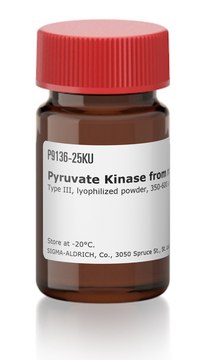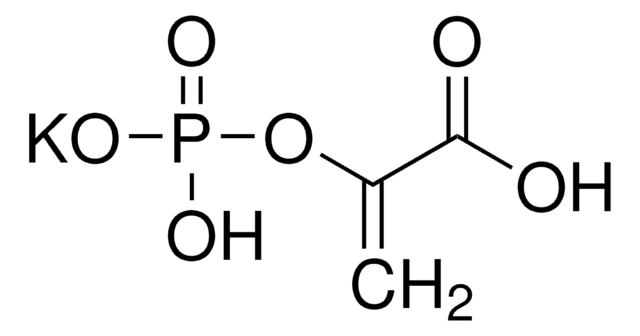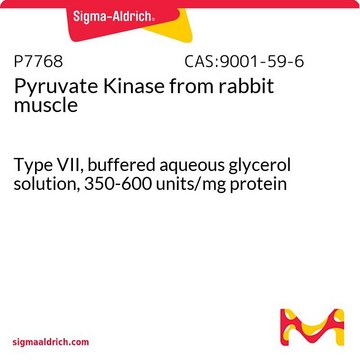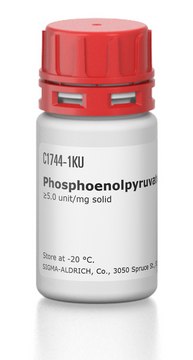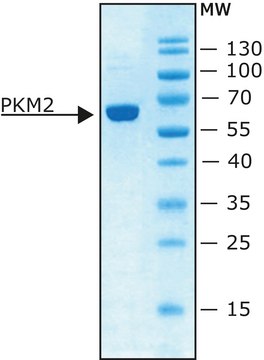MAK408
Phosphoenolpyruvate Carboxykinase Activity Assay Kit (Colorimetric)
sufficient for 100 colorimetric tests
Sign Into View Organizational & Contract Pricing
All Photos(1)
About This Item
UNSPSC Code:
12161503
NACRES:
NA.84
Recommended Products
detection method
colorimetric
relevant disease(s)
endocrinological disorders, diabetes
storage temp.
−20°C
General description
Phosphoenolpyruvate Carboxykinase (PEPCK) is an enzyme which belongs to the lyase family. In the presence of GTP, it catalyzes the reversible conversion of oxaloacetate (OAA) into phosphoenolpyruvate (PEP), GDP and CO2. In humans, two isoforms of PEPCK are found: cytosolic form (PEPCK-C, also called PCK1) and mitochondrial form (PEPCK-M). PEPCK-C is a rate-controlling step in gluconeogenesis. Recent studies found abnormal concentrations of PEPCK in diabetic mice. Therefore, accurate measurement of Phosphoenolpyruvate Carboxykinase activity is valuable for both mechanistic and therapeutic studies.
Features and Benefits
Phosphoenolpyruvate Carboxykinase Activity Assay Kit:
- Compatible with high-throughput handling systems.
- Sensitive, detecting than 10 μU of Phosphoenolpyruvate Carboxykinase activity per sample.
Suitability
The kit is suitable for the measurement of Phosphoenolpyruvate Carboxykinase activity in various samples including tissue (rat liver, kidney, heart etc.) and adherent/suspension cells (HeLa, Jurkat, HEK 293 cells etc.). As well as the analysis of the gluconeogenesis pathway.
Principle
In this assay, Phosphoenolpyruvate Carboxykinase is coupled with a set of enzymes that convert phosphoenolpyruvate and carbonate into a series of intermediates and hydrogen peroxide, which in turn, reacts with a probe and is converted generating a colorimetric signal (A570 nm). The color intensity is directly proportional to the amount of active Phosphoenolpyruvate Carboxykinase present in samples.
Signal Word
Danger
Hazard Statements
Precautionary Statements
Hazard Classifications
Resp. Sens. 1 - Skin Sens. 1 - STOT SE 3
Target Organs
Respiratory system
Storage Class Code
10 - Combustible liquids
Regulatory Information
常规特殊物品
Choose from one of the most recent versions:
Certificates of Analysis (COA)
Lot/Batch Number
Sorry, we don't have COAs for this product available online at this time.
If you need assistance, please contact Customer Support.
Already Own This Product?
Find documentation for the products that you have recently purchased in the Document Library.
Our team of scientists has experience in all areas of research including Life Science, Material Science, Chemical Synthesis, Chromatography, Analytical and many others.
Contact Technical Service
